Effects of Liver x receptor agonist treatment on signal transduction pathways in acute lung inflammation
- PMID: 20175894
- PMCID: PMC2836283
- DOI: 10.1186/1465-9921-11-19
Effects of Liver x receptor agonist treatment on signal transduction pathways in acute lung inflammation
Erratum in
-
Correction to: Effects of liver × receptor agonist treatment on signal transduction pathways in acute lung inflammation.Respir Res. 2025 Feb 28;26(1):72. doi: 10.1186/s12931-025-03161-5. Respir Res. 2025. PMID: 40022170 Free PMC article. No abstract available.
Abstract
Background: Liver x receptor alpha (LXRalpha) and beta (LXRbeta) are members of the nuclear receptor super family of ligand-activated transcription factors, a super family which includes the perhaps better known glucocorticoid receptor, estrogen receptor, thyroid receptor, and peroxisome proliferator-activated receptors. There is limited evidence that LXL activation may reduces acute lung inflammation. The aim of this study was to investigate the effects of T0901317, a potent LXR receptor ligand, in a mouse model of carrageenan-induced pleurisy.
Methods: Injection of carrageenan into the pleural cavity of mice elicited an acute inflammatory response characterized by: accumulation of fluid containing a large number of neutrophils (PMNs) in the pleural cavity, infiltration of PMNs in lung tissues and subsequent lipid peroxidation, and increased production of nitrite/nitrate (NOx), tumor necrosis factor-alpha, (TNF-alpha) and interleukin-1beta (IL-1beta). Furthermore, carrageenan induced the expression of iNOS, nitrotyrosine and PARP, as well as induced apoptosis (TUNEL staining and Bax and Bcl-2 expression) in the lung tissues.
Results: Administration of T0901317, 30 min after the challenge with carrageenan, caused a significant reduction in a dose dependent manner of all the parameters of inflammation measured.
Conclusions: Thus, based on these findings we propose that LXR ligand such as T0901317, may be useful in the treatment of various inflammatory diseases.
Figures
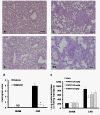
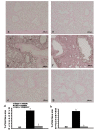

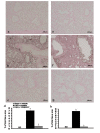
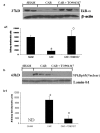
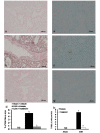

Similar articles
-
CGS 21680, an agonist of the adenosine (A2A) receptor, decreases acute lung inflammation.Eur J Pharmacol. 2011 Oct 1;668(1-2):305-16. doi: 10.1016/j.ejphar.2011.06.049. Epub 2011 Jul 8. Eur J Pharmacol. 2011. PMID: 21756897
-
Effect of PD98059, a selective MAPK3/MAPK1 inhibitor, on acute lung injury in mice.Int J Immunopathol Pharmacol. 2009 Oct-Dec;22(4):937-50. doi: 10.1177/039463200902200409. Int J Immunopathol Pharmacol. 2009. PMID: 20074457
-
Effect of apocynin, a NADPH oxidase inhibitor, on acute lung inflammation.Biochem Pharmacol. 2011 Mar 1;81(5):636-48. doi: 10.1016/j.bcp.2010.12.006. Epub 2010 Dec 11. Biochem Pharmacol. 2011. PMID: 21147071
-
GW0742, a high-affinity PPAR -beta/delta agonist, inhibits acute lung injury in mice.Shock. 2010 Apr;33(4):426-35. doi: 10.1097/SHK.0b013e3181b8f2fb. Shock. 2010. PMID: 20407409
-
Hypericum perforatum attenuates the development of carrageenan-induced lung injury in mice.Free Radic Biol Med. 2006 Mar 1;40(5):740-53. doi: 10.1016/j.freeradbiomed.2005.08.034. Epub 2005 Nov 10. Free Radic Biol Med. 2006. PMID: 16520227
Cited by
-
Emerging roles for cholesterol and lipoproteins in lung disease.Pulm Pharmacol Ther. 2013 Aug;26(4):430-7. doi: 10.1016/j.pupt.2012.06.002. Epub 2012 Jun 15. Pulm Pharmacol Ther. 2013. PMID: 22706330 Free PMC article.
-
Ozone-derived Oxysterols Affect Liver X Receptor (LXR) Signaling: A POTENTIAL ROLE FOR LIPID-PROTEIN ADDUCTS.J Biol Chem. 2016 Nov 25;291(48):25192-25206. doi: 10.1074/jbc.M116.732362. Epub 2016 Oct 4. J Biol Chem. 2016. PMID: 27703007 Free PMC article.
-
Liver X receptor α activation with the synthetic ligand T0901317 reduces lung injury and inflammation after hemorrhage and resuscitation via inhibition of the nuclear factor κB pathway.Shock. 2011 Apr;35(4):367-74. doi: 10.1097/SHK.0b013e3181f7d742. Shock. 2011. PMID: 20926989 Free PMC article.
-
A liver-X-receptor ligand, T0901317, attenuates IgE production and airway remodeling in chronic asthma model of mice.PLoS One. 2014 Mar 28;9(3):e92668. doi: 10.1371/journal.pone.0092668. eCollection 2014. PLoS One. 2014. PMID: 24681543 Free PMC article.
-
Activation of liver-X-receptor α but not liver-X-receptor β protects against myocardial ischemia/reperfusion injury.Circ Heart Fail. 2014 Nov;7(6):1032-41. doi: 10.1161/CIRCHEARTFAILURE.114.001260. Epub 2014 Oct 2. Circ Heart Fail. 2014. PMID: 25277999 Free PMC article.
References
-
- Tangirala RK, Bischoff ED, Joseph SB, Wagner BL, Walczak R, Laffitte BA, Daige CL, Thomas D, Heyman RA, Mangelsdorf DJ, Wang X, Lusis AJ, Tontonoz P, Schulman IG. Identification of macrophage liver × receptors as inhibitors of atherosclerosis. Proc Natl Acad Sci USA. 2002;99(18):11896–11901. doi: 10.1073/pnas.182199799. - DOI - PMC - PubMed
Publication types
MeSH terms
Substances
LinkOut - more resources
Full Text Sources
Medical
Research Materials

